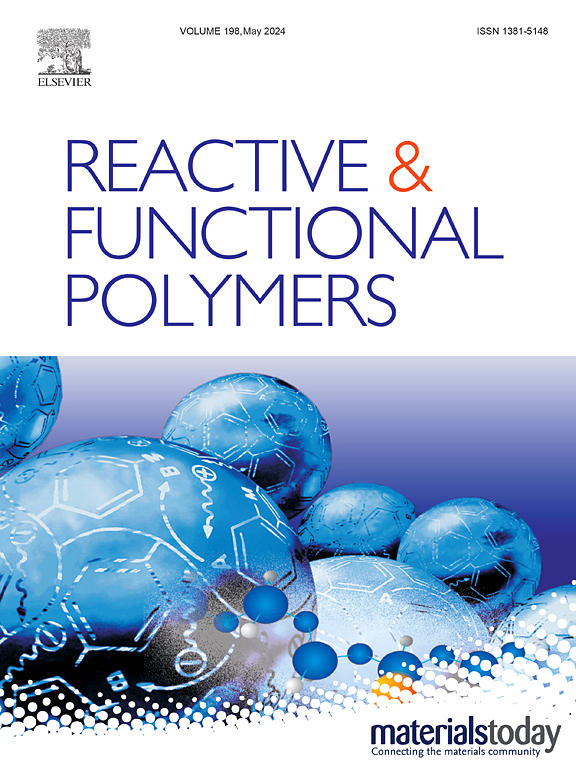用位置异构体合成的两种Ru(II)-金属聚合物在不同电解质中的比电容比较研究
IF 4.5
3区 工程技术
Q1 CHEMISTRY, APPLIED
引用次数: 0
摘要
金属聚合物是由有机和无机成分制成的混合材料,具有可调节的性能,使其非常适合高级用途。本研究的重点是利用具有多个结合位点的异位配体合成和表征Ru(II)-金属聚合物,实现稳定的金属配体配合物和线性聚合物链的生长。采用ATR-IR、NMR、UV-Vis和电化学等分析技术对其结构、电子和氧化还原性能进行了评价。详细研究了不同电解质的比电容,发现Ru(II)-L1 Poly在1 M H2SO4中电容值为131 Fg−1,Ru(II)-L2 Poly在LiClO4中电容值为130 Fg−1,在8000次循环后具有强大的循环稳定性,保持98%的初始电容。这些金属聚合物与有机共轭聚合物具有优越的兼容性和灵活性,使其成为制造混合储能设备的理想选择。它们优异的保留性和稳定性强调了它们作为超级电容器氧化还原添加剂的潜力。这项工作不仅解决了能量存储研究的空白,而且突出了Ru(II)-金属聚合物在开发用于先进能源技术的高性能电化学材料方面的适应性。本文章由计算机程序翻译,如有差异,请以英文原文为准。

Comparative studies of specific capacitance in different electrolytes of two Ru(II)-metallopolymers synthesized using positional isomeric ligands
Metallopolymers are hybrid materials made from both organic and inorganic components, with adjustable properties that make them great for advanced uses. This study focuses on the synthesis and characterization of Ru(II)-metallopolymers using positionally isomeric ditopic ligands with multiple binding sites, enabling stable metal-ligand complexes and the growth of linear polymer chains. Analytical techniques such as ATR-IR, NMR, UV–Vis, and electrochemical methods were employed to assess their structural, electronic, and redox properties. A detailed investigation of specific capacitance in various electrolytes revealed capacitance values of 131 Fg−1 in 1 M H2SO4 for Ru(II)-L1 Poly and 130 Fg−1 in LiClO4 for Ru(II)-L2 Poly, with robust cyclic stability retaining 98 % of initial capacitance after 8000 cycles. These metallopolymers offer superior compatibility and flexibility with organic conjugated polymers, making them ideal for making hybrid energy storage devices. Their excellent retention and stability underscore their potential as redox additives in supercapacitors. This work not only addresses gaps in energy storage research but also highlights the adaptability of Ru(II)-metallopolymers in developing high-performance, electrochemical materials for advanced energy technologies.
求助全文
通过发布文献求助,成功后即可免费获取论文全文。
去求助
来源期刊

Reactive & Functional Polymers
工程技术-高分子科学
CiteScore
8.90
自引率
5.90%
发文量
259
审稿时长
27 days
期刊介绍:
Reactive & Functional Polymers provides a forum to disseminate original ideas, concepts and developments in the science and technology of polymers with functional groups, which impart specific chemical reactivity or physical, chemical, structural, biological, and pharmacological functionality. The scope covers organic polymers, acting for instance as reagents, catalysts, templates, ion-exchangers, selective sorbents, chelating or antimicrobial agents, drug carriers, sensors, membranes, and hydrogels. This also includes reactive cross-linkable prepolymers and high-performance thermosetting polymers, natural or degradable polymers, conducting polymers, and porous polymers.
Original research articles must contain thorough molecular and material characterization data on synthesis of the above polymers in combination with their applications. Applications include but are not limited to catalysis, water or effluent treatment, separations and recovery, electronics and information storage, energy conversion, encapsulation, or adhesion.
 求助内容:
求助内容: 应助结果提醒方式:
应助结果提醒方式:


